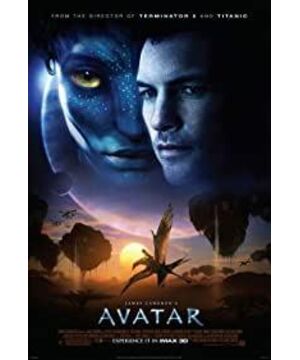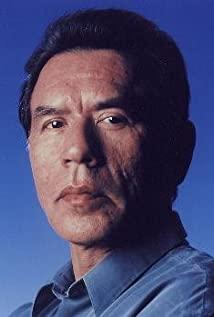, Cameron's sci-fi knot
In 1977, 22-year-old truck driver James Cameron went to see "Star Wars" with a buddy. Friends are addicted to the movie and can't extricate themselves; Cameron leaves the movie theater to fight boxing to vent. A college dropout, he drove school meals all day in Orange County, Southern California. But in his spare time, he draws small models and writes science fiction — stories set in distant galaxies. Now he faces a discouraging reality: The world of his daydreams has been brought to life by Lucas. "Star Wars" should be his work.
This really pissed him off, so he bought some cheap camera equipment himself and tried to recreate Lucas's shooting process. He casts harsh, bright light in the living room and has the camera roll on a track to practice push-pull photography, all to the ire of his wife. He spent days wandering the USC library, reading all the books on special effects. He became, in his own words, "completely obsessed."
He quickly realized he needed some funding, so he persuaded a group of local dentists to invest $20,000 in what he called Cameron's version of Star Wars. He and a friend wrote the script, "Change of Generations," and spent the money on a 12-minute shooter that featured a one-frame fight between an alien robot and a woman manipulating a lot of skeletons. (Those skeleton warriors were models that Cameron had carefully assembled.)
The original plan was to use the clip to win the studio and then make a full-length film. But after months of touting in Hollywood, Cameron returned empty-handed and had to shelve his ambitions to challenge Lucas.
Had to put in the effort to do something worthwhile: work under Roger Corman, the king of B-movies. Cameron was hired to build miniature spaceships for the film "Century", and he rose to the top in his own way, later becoming one of Koeman's virtual visual effects specialists. In 1981, he took the director's throne, overseeing the production of a shoddy horror film, Piranha II: Breeding.
One night, after an editorial meeting for "Piranha," Cameron fell asleep with a high fever and dreamed that he saw a robot walking towards a terrified woman. The scene is fixed here. Over the next year, Cameron completed a script based on this dream scene, about a robot assassin who travels through time to kill the mother of a future rebel leader.
This time, he no longer needs a dentist investment. The story was so convincing that he was able to persuade a small film financing company to pay him to direct it. When the film was released in 1984, "The Terminator" established Arnold Schwarzenegger as a superstar, and James Cameron, a former truck driver, was transformed into a top director.
Over the next decade, Cameron directed an astonishing series of films, including "Alien," "The Abyss," "Terminator 2: Doomsday," and "True Lies." Those films, which grossed $1.1 billion worldwide, gave Cameron enough clout to rekindle his dream of creating an interstellar epic. So in 1995, he wrote an 82-page screenplay about a paralyzed soldier on a mission to a faraway planet after the Earth was reduced to a bleak wasteland. The alien world known as Pandora is made up of the Na'vi, a raging humanoid with blue skin, cat-faced, reptilian-like tails, and 10 feet tall. Pandora's atmosphere is toxic to humans, so scientists genetically engineered the Na'vi to create a new species, the Avatar, an organism with human consciousness that can be fully controlled remotely. Cameron believes that the movie "Avatar" will be his second dream. This is also his first film after completing the little adventure of a ship hitting an iceberg and a romantic production.
"Titanic," of course, went on to become the most rewarding movie of all time. It has won 11 Oscars including best picture and best director. Cameron can now make films as he pleases. So what did he do?
Others evaporated.
Cameron has refused to release another Hollywood movie for 12 years since then. He recorded some underwater documentaries and did some productions, but he stayed largely out of the public eye. Most of the time, he rarely mentioned "Avatar" and didn't reveal much about his filming plans.
blue revolution
But now, finally, the king is back. On December 18, "Avatar" landed in theaters. This time, the now 55-year-old Cameron doesn't have to build the wreck of an ocean-going ship off the coast of Mexico, as he did with Titanic, so why does one of Hollywood's leading directors take so long to make a movie? Part of the reason: surpassing Lucas, George Lucas, is not easy. Cameron needs to invent a whole set of filmmaking techniques, push theaters around the world to update their equipment, and imagine the full details of alien worlds. Besides, there is a lot to worry about. To really understand why Avatar took so long to come out, we have to look back at the making of Titanic.
"People may forget, it was a tough time," Cameron told me in a private theater at his home in Malibu, California. He looked a lot softer than he did at the 1998 Oscars - with long, gray hair and a clean shaved face. However, his famous quick temper was still visible. At the beginning of the interview, I asked him, what have you been doing for the past ten years? He said solemnly, "I can't say a word or two," and listen to me slowly.
“When we were filming Titanic, we were always estimating how much we might lose,” and looking back at its fantastic box-office receipts today, it’s easy to forget that Titanic was once predicted as a box-office poison. The cost of filming was more than double the budget, which was $100 million, making it the most expensive film ever made. The main sponsor, 20th Century Fox, also pressed Cameron to cut costs.
Cameron promised to give up all directing fees and profit sharing, in order to control costs. The release of Titanic missed its July 4th schedule again, and it seems to be in trouble again. Cameron put a razor blade on the editing desk with a sticky note on it: The film is successful, it can be used. "All I know is that I made a $200 million love movie that ended up killing almost everyone. What the hell am I doing?" he told friends privately. "I may have to start my career all over again."
Hollywood industry magazine Variety called it "the biggest gamble in movie history" and questioned whether Fox would be able to recoup its costs. "Everyone thought the film was going to fail catastrophically," said Rae Sanchini, the former chairman of Cameron Productions.
However, the Titanic miraculously escaped the iceberg, making it one of the highest-grossing films with worldwide box office receipts of $1.8 billion. "We went from the bottom to the top in one fell swoop," Keaney said. "We were all a little overwhelmed by the sudden success, even more so for Jim. He was exhausted physically and mentally.
Still, Keeney is looking forward to the big director's re-emergence and continued efforts. Before filming the Titanic, Camille Long has a passion for Avatar—after all, it's been his dream to make a blockbuster movie in outer space since 1977. But right now, he doesn't seem to be interested.
Part of his ambivalence Cameron is one of the founders of the digital company, a special effects company established in 1993. He stated the creative concept of Avatar, indicating that the protagonist in the play is about 10 inches tall blue skin The aliens, with thin waists and strong limbs. They had to be lifelike, but they couldn't use special props. These aliens needed to be designed by computers. But given the state of technology at the time, his team told him that was not realistic. The project required too much time, money, and great computer design.
"If we do this, we will fail," one of the artists told him. "It can't be done." Such technology simply does not exist. "
Cameron was relieved. He didn't like haggling with actors, agents. "They're bullshitting. "He wanted to rest. At this time, the pie fell from the sky, and it was huge, and it fell on Cameron. The Fox executives knew that if they wanted to make more money, they had to make the king of Hollywood happy. So, His previous agreement to give up profit sharing was voided, and after the Oscars, they wrote him a check for tens of millions of dollars (it is said that Cameron ended up getting more than 75 million US dollars). With this money, he will not need the rest of his life. Work, enough money.
"That's the money," Cameron said. "I can play as much as I want. "
Let's see how Cameron plays the world. Micronesia: Lurking near depth charges left over from World War II, it's no joke, the bombs are loaded with explosives. In the summer of 2000, he chartered an 80-foot steamer. Take a group of work buddies and infiltrate a sunken Japanese battleship. Vincent Pace, an expert in underwater photography, worked on the Titanic and the abyss. Pace brought all the equipment and looked forward to shooting in high-definition, but he soon discovered that Cameron had new ideas.
As they browsed the footage shot underwater, Cameron suddenly asked Pace: Could we build a "Holy Grail camera," a high-definition camera device that could play both 2D and 3D images? Pace wasn't sure, after all, he wasn't an expert, but he knew cheap red and blue paper glasses for watching traditional 3-D movies. They are notoriously inconvenient to use, and over time can cause headaches if the projector is not calibrated properly. Cameron believes there must be a way to change. He actually wanted to talk about his vision for the next generation of cameras: portable, digital, high-definition, 3-D imaging.
Inventing the camera was no easy task, but Cameron decided to start from scratch. He mentioned a mysterious, long-awaited screening plan that made the audience feel as if they were on an alien planet. Cameron wanted to make a 3-D film that would truly immerse the audience. Since there is no ideal 3-D camera, he has to design a camera that meets the requirements. So he invited Pace to take part in an underwater adventure in the Pacific Ocean to see if underwater cameras could help with 3-D cameras. Perhaps his goal may seem extreme, but Pace thought the idea was interesting and agreed to participate in the development of the new camera. "The underwater trip, Jim's goal was clear, it was fun, but for me, it was a bit confusing," Pace said.
Two months later, Cameron bought Pace a first-class flight from Los Angeles to Tokyo for about $17,000. Soon they came to Sony's high-definition camera department and had face-to-face exchanges with engineers. Pace's trip was mainly to help Cameron convince Sony engineers to separate the lens and image sensor on a professional-grade high-definition camera from the processor -- and then separate the lens from the bulky central processing unit and connect it with a cable. A conventional 3-D camera weighs about 450 pounds, while the improved camera, which weighs only 50 pounds, has dual-lens imaging. It's easier for photographers too.
Sony agreed to build a new production line, but a prototype would be required. Pace set about developing it. Three months later, Pace put the lens into the camera, and the cameraman was able to precisely control the 3-D image. He thought it would be enough to find a few actors to try. But Cameron apparently had new ideas. He asked Pace to install a set of filming equipment on the leased World War II-era P-51 battle, while Pace was on standby in the B-17. Once aerial filming began, the P-51 pilot picked up his 50-caliber machine gun and fired blank rounds at the Pace B-17, while Cameron jumped right behind the P-51 pilot. "This was the first time I had a Jim test," Pace said.
The camera experiment works well, the 3D imaging is accurate, and there is no headache even if it is played for a long time. Pace thought Cameron was about to start shooting Avatar. However, the director has dived 2.3 miles under the sea with his new weapon to take 3D images of the wreck of the Titanic. This shows that Cameron does not want to start his "manly adventure."
The partner of this underwater adventure is deep-sea explorer Andrew Wight (Andrew Wight), a brave Australian. White has surveyed collapsed underwater caves, brushed past great white sharks and confronted saltwater crocodiles. He felt that it was a little troublesome to complete Cameron's task. As the hurricane pushed toward them along the east coast, White thought they should turn their bows in time to avoid the hurricane. But Cameron argued that it was the perfect opportunity to film "The Vortex," which was very thrilling. The Russian captain rejected Cameron's suggestion and fled the scene in a hurry, much to Cameron's disappointment.
"He's a tough guy," White said. "It's not a death plan, it's more interesting."
Keaney, the former chairman of Cameron Productions, couldn't understand what he wanted to do. "I understand, he's getting a little tired of filming, but, I don't want him to go astray and go further and further."
Cinema succumbed to the visual
Cameron certainly wasn't the kind of fool to mess things up. He wanted to make Avatar, a true digital three-dimensional film. Sadly, theater chains are reluctant to adopt this technology. Since each theater was investing about $100,000 in equipment upgrades, the best way to convince them was to show them the box-office benefits of high-definition 3D movies.
So Cameron decided to let other big directors try his new guy first. The first film was Agent Kid, directed by Robert Rodriguez. While watching the film, but also to wear old-fashioned red and blue glasses. But Cameron hopes to use this to prove that there is a market demand for stereoscopic movies, thereby stimulating theater owners to invest in next-generation projection systems. In the summer of 2003, Secret Service had grossed $200 million worldwide, but theaters were hesitant to invest in new equipment.
Cameron decided to talk to theater owners in person. In March 2005, he went all out to promote his new projection system at the Film Expo held at the Paris Las Vegas Hotel and Casino. His words were provocative. "The world has entered a new era of cinema." If it doesn't work, he is alarmist. If they don't adjust the equipment in time now, they will regret it in the future. At the end of the year, only 79 theaters were able to show stereoscopic movies. But in the five years from 2005 to 2009, more than 3,000 theaters capable of showing 3D movies were added.
Reality in Dreams The
lack of a 3D theater isn't the only reason Cameron is holding back. Special effects companies are still trying to create realistic animated characters. In 2002, the clues were revealed, when Peter Jackson (Peter Jackson) teamed up with New Zealand's Weta Digital Company to use computer effects to design a jaw-dropping image - Gollum, a character in the Lord of the Rings who is the enemy of the Hobbit. Cameron thinks the CG era is here.
In the spring of 2005, he met with Fox executives and asked for a multi-million dollar investment to prove his dream. At first they had some concerns, not all technical issues. For example: tails - do all aliens need to drag a tail?
"Yes," Cameron affirmed. "They need tails."
He didn't say anything, and he didn't need to explain. Fox executives also stopped questioning, and they agreed to start shooting. Cameron is a Hollywood blockbuster, and his power needs no words.
Cameron took five weeks for his second test. Mainly aliens and Arda travel through the forest to communicate a set of shots. Lucas's Industrial Light and Magic company did the CGI, which was enough to convince Fox to invest $195 million in the film. Cameron is back as director.
First, Cameron invited Lucas to join. Lucas registered $20,000 to open a special effects workstation at home in Orange County. And this time, money is not an issue. Lucas also has over 30 years of experience making Star Wars. Heroes finally have their place. In order to obtain a more realistic effect, Cameron hired experts and carried out a careful design.
First, he hired Paul Formmer, a language expert at the University of Southern California, to design a new language system for the Na'vi, a blue-skinned humanoid, the natives of Pandora. Paul officially joined in August 2005. He asked Cameron what kind of pronunciation he would like aliens to have? Clicking guttural or mixed tones? To narrow down the options, Paul turned on the microphone and recorded several unused sound samples for Cameron to choose from.
Cameron prefers the "larynx fricative", which is a common sound in spoken language. It seems that the throat is blocked by something, which is a bit vague. Having established the tone of the language, Paul began to build the basic grammar. Cameron has his own opinions, such as when discussing the grammatical rules of nouns, should the modifier of a compound word be at the beginning or the end of the word? It took Paul months to build a separate grammar system. "He's a very thoughtful guy," Paul said. "He never tells you where to start building a language system, but he talks to you about grammar points."
Thirteen months later, the work begins. Paul wrote a booklet titled "The Na'vi Language," and he started showing actors how to pronounce it. He set up Na'vi language training camps, teaching them sentence by sentence. "Cameron wanted the actors to be passionate, but they were speaking a language that never existed," Paul said. If the actor's pronunciation is inaccurate, he has to stop and correct it word for word. "The actors are also annoyed sometimes when I go to correct their incorrect pronunciation, because after all they've never been pronounced this way."
With the establishment of the language system, Cameron set about naming animals and plants on alien planets. Every animal and plant has a Na'vi name, a Latin name and a common name. As if that wasn't realistic enough, Cameron hired Jodie Holt, chair of the plant science department at the University of California, to write detailed scientific descriptions for the dozens of plants he created. She spent about five weeks illustrating how the Pandora plant, its luminous and magnetic properties, came to be. When she was done, Cameron organized all the entries into flora and fauna.
This behind-the-scenes work will never be seen on screen, but Cameron loves it. He hired a lot of experts, such as astrophysicists, music professors, archaeologists. They calculated the atmospheric density of Pandora, creating three equally structured alien music. When one of the experts pulled out the Star Wars encyclopedia, Cameron glanced, "We'll do better." In the
end, the team of writers and editors compiled a 350-page Pandora encyclopedia handbook. It records all science and culture related to this alien planet. Fully embodies Cameron's virtual world. This winter, fans of Arda will be able to read some chapters of the encyclopedia online.
Cameron moved the laser pointer, trying to show me something. The rich scenes are presented one by one with the laser pointer, and finally fixed on a group of Na'vi people. The pen stopped. He motioned me to look at an ornate headdress covered with hundreds of beads. They look very clear, and they are indistinguishable from the real thing. Each bead is specially designed by a digital artist, Cameron says, so they look like they were made by hand. “Every leaf, every blade of grass was made this way.
Looking back at 1997, Cameron was thinking so much about the Titanic, and disaster seemed to be right around the corner.” It was silly then,” he says. Now the problem seems to be reversed: The expectations are getting higher and higher. “The work pressure is getting higher,” he says.
Although this time, Cameron is more likely to enjoy his work. , at least he doesn't have to put razor blades on the editor's desk to make it clear "Avatar is an antidote to Jim," Keaney said. "He doesn't have to worry about the weather, his wardrobe, historical accuracy or whatever. . It wouldn't be a terrible disaster if the heroine had pimples. Avatar gives Jim the ability to take control. "
It's been 32 years since Cameron longed to make an outer space blockbuster to rival Star Wars. Cameron finally had a dream come true. Now he can't wait to hear what viewers and critics have to say. This is out of his control.
View more about Avatar reviews











